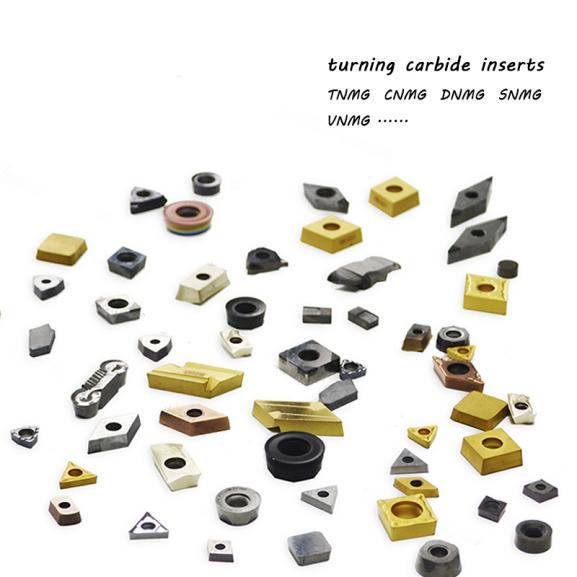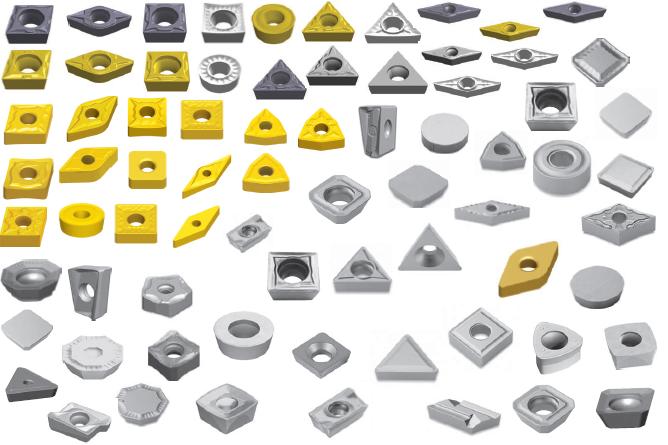Shapes of Carbide Inserts And Cautions for the Use of Cemented Carbide Inserts
Shapes of Carbide Inserts And Cautions for the Use of Cemented Carbide Inserts

Carbide inserts are used at high speeds that enable faster machining, ultimately resulting in better finishing. Carbide inserts are tools used to accurately machine metals, including steels, carbon, cast iron, high-temperature alloys, and other non-ferrous metals. These are replaceable and come in various styles, grades, and sizes.
For different cutting operations, carbide inserts are manufactured in a variety of different geometric shapes tailored to each application.
Round or circular inserts are used for button mills or for radius groove turning and parting. Button mills, also referred to as copy cutters, use circular inserts with a significant radius edge that permits enhanced feed rates and depth of cuts at lower power. Radius groove turning is the process of cutting radial grooves into a round part. Parting is the process of cutting completely through a part.
Triangular, square, rectangular, diamond, rhomboid, pentagon, and octagon shapes have multiple cutting edges and allow the insert to be rotated to a new, unused edge when an edge is worn. These inserts are used for turning, boring, drilling, and grooving applications. To extend insert life, worn edges can be used for roughing applications before being rotated to a new edge for finish machining.

Various tip geometries further define insert shape and types. Inserts are manufactured with many different tip angles, including 35, 50, 55, 60, 75, 80, 85, 90, 108, 120 and 135 degrees.
Cautions for the use of cemented carbide insert
1. Listen to the soundcheck: when installing, please carefully check with the right index finger on the insert and the insert impending, then tap the insert with a wooden hammer, give an ear to listen to the sound of the insert. Muddy sound proves that the insert is often affected by an outside force, collision, and damage. And the insert should be immediately banned.
2. Preparation of tungsten carbide insert installation: before the insert installation, please carefully clean the dust, chips, and other sundry on the mounting surface of the rotary bearing of the cutting machine in advance to keep the bearing mounting surface and the cutting machine clean.
3. Place the insert carefully and smoothly on the mounting surface of the bearing and turn the bearing of the foot cutter by hand to make it automatically align with the center of the insert.
4. After the carbide insert is installed, there should be no looseness or deflection.
5. Safety protection: After the cemented carbide cutting tool is installed, the safety cover and other protective devices of the cutting machine must be installed in place before starting the cutting machine.
6. Test machine: after the cemented carbide tool is installed, run empty for 5 minutes, and carefully observe and listen to the running condition of the foot cutting machine. No obvious loosening, vibration, and other abnormal sound phenomena are allowed. If any abnormal phenomenon occurs, please stop immediately and ask professional maintenance personnel to check the causes of the fault, and confirm that the fault is eliminated before use.

Carbide inserts storage method: it is strictly prohibited to write or mark on the insert by using a pencil or other scratch method to prevent the insert body from being damaged. The cemented carbide cutting tool of the foot cutting machine is extremely sharp but brittle. To avoid the injury of the insert or accidental damage to the insert, keep them away from the human body or other hard metal objects. The inserts to be used should be properly kept and stored by the dedicated personnel, and should not be used casually, in case the inserts are damaged and cause accidents.





















